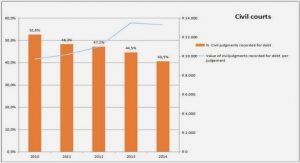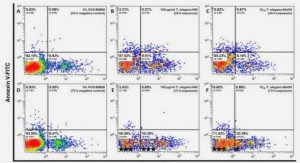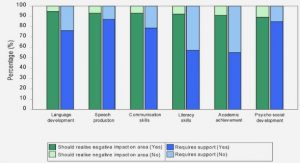Get Complete Project Material File(s) Now! »
Fluid dynamics is the branch of mechanics that studies the mechanics and heat transfer related to the motion of fluids, including liquids and gases. Common examples of phenomena involving fluid dynamics include airflow around an aircraft, ocean currents, engine turbines, and the circulatory system of the human body. Fluid dynamics has two subdisciplines. One is hydrodynamics, which deals with liquids in motion. The other is aerodynamics, which deals with air and gases in motion, especially flows over a plane.
The development of fluid dynamics can be traced back to Archimedes, who provided the fundamental principles of hydrostatics in his work On Floating Bodies (Archimedes, 287BC212BC). He was the first person who summarized the mechanics of static fluid. Newton contributed significantly to fluid dynamics in his work The Mathematical Principles of Natural Philosophy, in which he discussed fluid resistance and wave motion. He established fluid dynamics as an independent branch of mechanics. The French engineer Navier (Navier, 1823) and the British mathematician Stokes (Stokes, 1845) independently proposed a theory showing how viscosity can have an effect on a fluid. This theory has led to the development of the Navier-Stokes equations.
Mathematically, it is difficult to find the exact solution for the Navier-Stokes equations. Computational fluid dynamics (CFD) methods have become powerful tools for solving such equations as a supplement to experimental analysis of complex fluid phenomena. CFD includes the finite element method (FEM), the finite volume method (FVM), the finite difference method, etc. FEM is commonly used in such industries as aerospace, mechanical manufacturing, nuclear power, and civil engineering. The first idea of FEM can be traced back to ancient times when mathematicians calculated the circular constant using polygons to approximate a circle. With the development of high-speed computation and new algorithms, FEM has gained in popularity over the years. There are currently numerous commercial FEM software products on the market, such as Nastra (MSC Software 2015), Ansys (Ansys, 2015), and Abaqus (Dassault Systèmes, 2015)
When a fluid moves smoothly and steadily in parallel layers, the flow is said to be laminar. When a fluid moves in irregular paths, the flow is said to be turbulent. In compressible turbulent flows, the velocity, pressure, density, viscosity, and temperature fluctuate. A small Reynolds number usually results in laminar flow, and a high Reynolds number usually results in turbulent flow. The flow is said to be transitional when the Reynolds number is high but not sufficiently high to make the flow turbulent.
Turbulence will start to appear as the Reynolds number increases. Turbulence is a random phenomenon, and it is hard to predict the variations in both space and time. It is usually treated statistically. The velocity field is three-dimensional (3D) and rotational. Turbulence has a diffusive character; it increases the rate of homogenization, the transport of mass, momentum, and energy. It also has a dissipation characteristic; kinetic energy is rapidly converted into internal energy.
The earliest description of turbulence can be traced back to Leonardo da Vinci (Lumley, 1997). In 1877, Boussinesq (Boussinesq, 1877) proposed the hypothesis that turbulent stresses are linearly proportional to mean strain rates. This hypothesis greatly influenced the development of the study of turbulence. In 1883, Osborne Reynolds (Reynolds, 1883) conducted experiments to visualize the turbulence phenomenon in circular conduits. He introduced the idea of decomposing the flow variables into mean and fluctuating parts. This led to the development of the Reynolds-averaged Navier-Stokes (RANS) equations. Wilcox developed more complicated Favre-averaged Navier-Stokes equations (Wilcox, 1994). Using Reynolds averaging, we can derive a simple form of the averaged Navier-Stokes equations.
Because many engineering problems are turbulent, turbulence modeling is crucial in CFD. The RANS model has both linear and nonlinear eddy viscosity models. The linear eddy viscosity models can be categorized based on the number of equations.
The first type of models is the zero-equation model. Zero-equation models do not introduce any new equations and simply use the existing variables. They define a relationship between the turbulent flux and the averaged value of variables. Prandtl proposed a mixing-length model. Van Driest (Van Driest, 1956) developed a viscous damping correction for the mixing-length model. The Cebeci-Smith model (Smith and Cebeci, 1967) refined the mixinglength concept. The Baldwin-Lomax model (Baldwin and Lomax, 1978) proposed a model that is suitable for high-speed flows with thin boundary layers. Another example is the Johnson-King model, which is suitable for turbulent boundary layer flows with strong adverse pressure gradients.
The second type of models is the one-equation model. One-equation models introduce one turbulent transported variable. We cite four models: Prandtl’s one-equation model, the Spalart-Allmaras model (Spalart and Allmaras, 1992), the Baldwin-Barth model (Baldwin and Barth, 1990), and the Rahman-Siikonen-Agarwal Model (Rahman et al, 2011).
The third type of models is the two-equation model. Two-equation models introduce two turbulent transport equations. Two-equation models are among the most commonly used turbulence models. Most of the models introduce the turbulent kinetic energy. Here we cite the RNG k − ε model (Yakhot et al, 1992), Wilcox’s k −ω model (Wilcox, 1988), the SST k −ω model (Menter, 1994), and the Launder-Sharma model (Launder and Sharma, 1974).
Many authors have proposed numerical methods to solve compressible RANS equations. Some numerical methods are FEMs. Our research is mainly based on the following works. El Kadri (El kadri, 1995) presented in his thesis presented a finite element model for two dimensional flows. Soulaïmani and Ben Haj Ali (Soulaïmani and Ben Haj Ali, 2003) proposed a parallel-distributed computing-based approach for the solution of some multiphysics problems. They validated the method on the Agard 445.3 airfoil. Soulaïmani et al (Soulaïmani et al, 2004) proposed an efficient parallel-distributed methodology for solving multiphysics problems. They validated the results on Agard 445.6 airfoil. Ben Haj Ali and Soulaïmani (Ben Haj Ali and Soulaïmani, 2010) proposed a stabilized FEM for solving the compressible Navier-Stokes equations combined with the Spalart-Allmaras model. They validated the code on the 3D boundary layer over a flat plate and on the ONERA-M6 wing. Rebaine (Rebaine, 1997) proposed a numerical method for two-dimensional (2D) compressible laminar and turbulent flows. Rebaine and Soulaïmani (Rebaine and Soulaïmani, 2001) proposed an FEM for simulation of 2D internal compressible turbulent flows. They validated the method in 2D supersonic and thrust augmenting ejectors. Soulaïmani et al (Soulaïmani et al, 2002b) proposed a conservative finite element formulation for the coupled fluid/mesh interaction problem. Soulaïmani et al (Soulaïmani et al, 1994) proposed an FEM for simulation of 2D internal compressible turbulent flows. Soulaïmani and Fortin (Soulaïmani and Fortin, 1994) proposed a method to solve the Navier-Stokes and Euler equations in a conservative form by using the conservation variables.
Aside from FEM, some numerical methods involving FVM (Finite Volume Method) are also proposed for solving the Navier-Stokes equations. Caughey and Jameson (Caughey and Jameson, 2003) proposed an FVM for transonic flow calculation. They used this method on swept wings and wing-cylinder combinations. They showed that the FVM has the advantage of adaptability to treat a variety of complex configurations. Hafez (Hafez, 1995) proposed a cell-vertex finite volume formulation using local finite element approximations to solve inviscid and viscous compressible flow equations on unstructured grids. Feistauer et al (Feistauer et al, 1995) proposed a numerical modeling of inviscid as well as viscous gas flow. The method is based on an upwind flux vector splitting finite volume scheme on various types of unstructured grids.
Table of contents :
INTRODUCTION
CHAPTER 1 GOVERNING EQUATIONS
1.1 Introduction
1.2 Conservative form in conservative variables
1.3 Dimensionless form
1.4 Vectorial form
1.5 Weak formulation ..
1.6 Spatial discretization
1.7 Time discretization
1.8 SUPG stabilization
1.9 Shock capturing
1.10 Initial conditions and boundary conditions
1.11 Elemental matrices
1.12 Elemental residual
1.13 The standard Spalart-Allmaras turbulence model
1.14 Coupled Navier-Stokes Spalart-Allmaras model
1.15 Solution algorithms
1.15.1 Solution to the Navier-Stokes equations
1.15.2 Newton-Raphson method for the equation of turbulent viscosity
1.15.3 Calculation of the tangent matrix for turbulence
1.15.4 Preconditioning
1.15.5 Additive Schwarz
1.15.6 Parallel GMRES
CHAPTER 2 DIFFERENT ELEMENTS
2.1 Discretization
2.2 Shape function
2.3 Numerical integration
2.4 The two-node line element
2.5 The eight-node hexahedron element
2.6 The four-node tetra element
2.7 The six-node prism element
2.8 The five-node pyramid element
CHAPTER 3 OBJECT-ORIENTED PROGRAMMING
3.1 Object-Oriented programming
3.2 Object-oriented programming in calculating elemental matrix and residual
3.3 Comparison with the flow-based programming
CHAPTER 4 NUMERICAL RESULTS
4.1 Introduction
4.2 NACA0012
4.3 DLR F11 model
CONCLUSION






